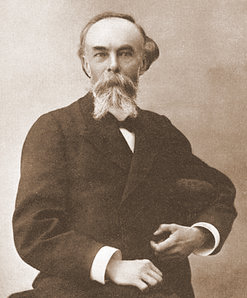Ataxic respiration
(Redirected from Biot's respiration)
Editor-In-Chief: Prab R Tumpati, MD
Obesity, Sleep & Internal medicine
Founder, WikiMD Wellnesspedia &
W8MD medical weight loss NYC and sleep center NYC
| Ataxic respiration | |
|---|---|

| |
| Synonyms | N/A |
| Pronounce | N/A |
| Specialty | N/A |
| Symptoms | Irregular breathing pattern, unpredictable pauses, and periods of apnea |
| Complications | Respiratory failure, hypoxia |
| Onset | Can occur at any age, often associated with brain injury |
| Duration | Variable, depending on underlying cause |
| Types | N/A |
| Causes | Brainstem damage, trauma, stroke, opioid overdose, increased intracranial pressure |
| Risks | Neurological disorders, head injury, substance abuse |
| Diagnosis | Clinical observation, neurological examination, imaging studies |
| Differential diagnosis | Cheyne-Stokes respiration, Kussmaul breathing, central sleep apnea |
| Prevention | N/A |
| Treatment | Address underlying cause, mechanical ventilation, oxygen therapy |
| Medication | N/A |
| Prognosis | Depends on the underlying cause and severity of brain injury |
| Frequency | Rare |
| Deaths | N/A |
Ataxic respiration, also known as Biot's respiration, is a distinct pattern of breathing characterized by irregular breaths of varying depth and rate, often followed by periods of apnea. This type of respiration is considered a sign of significant neurological dysfunction, specifically affecting the medulla oblongata, the part of the brain responsible for controlling autonomic functions such as breathing.
Causes[edit | edit source]
Ataxic respiration is most commonly associated with neurological conditions that impair the brainstem's ability to regulate breathing. These conditions include, but are not limited to, brainstem stroke, meningitis, brain trauma, and severe cases of intracranial pressure. It can also be observed in patients with terminal illnesses, where it is often a prelude to the cessation of breathing altogether.
Clinical Presentation[edit | edit source]
Patients exhibiting ataxic respiration display an unpredictable breathing pattern. Breath cycles vary dramatically in both rate and volume, with sudden pauses (apnea) that can last for several seconds. Unlike Cheyne-Stokes respiration, which has a crescendo-decrescendo pattern, ataxic breathing lacks a predictable rhythm. This erratic breathing can be distressing to both the patient and observers, and it often indicates severe neurological compromise.
Diagnosis[edit | edit source]
Diagnosis of ataxic respiration involves a thorough clinical assessment, including a detailed patient history and a physical examination. Neuroimaging techniques, such as MRI or CT scans, are often employed to identify underlying causes by visualizing the brainstem and surrounding structures. In some cases, lumbar puncture may be performed to rule out infectious causes like meningitis.
Treatment[edit | edit source]
Treatment of ataxic respiration focuses on managing the underlying cause. In cases of increased intracranial pressure, measures to reduce the pressure may be employed. If an infection is the cause, appropriate antibiotics or antiviral drugs are administered. Supportive care, including oxygen therapy and, in severe cases, mechanical ventilation, may be necessary to maintain adequate oxygenation and ventilation until the underlying condition can be addressed.
Prognosis[edit | edit source]
The prognosis for patients with ataxic respiration depends on the severity and treatability of the underlying cause. In many cases, the presence of ataxic breathing is a sign of severe neurological damage and may indicate a poor prognosis. Early detection and treatment of the underlying condition can improve outcomes, but in some cases, recovery may not be possible.
See Also[edit | edit source]
Search WikiMD
Ad.Tired of being Overweight? Try W8MD's physician weight loss program.
Semaglutide (Ozempic / Wegovy and Tirzepatide (Mounjaro / Zepbound) available.
Advertise on WikiMD
|
WikiMD's Wellness Encyclopedia |
| Let Food Be Thy Medicine Medicine Thy Food - Hippocrates |
Translate this page: - East Asian
中文,
日本,
한국어,
South Asian
हिन्दी,
தமிழ்,
తెలుగు,
Urdu,
ಕನ್ನಡ,
Southeast Asian
Indonesian,
Vietnamese,
Thai,
မြန်မာဘာသာ,
বাংলা
European
español,
Deutsch,
français,
Greek,
português do Brasil,
polski,
română,
русский,
Nederlands,
norsk,
svenska,
suomi,
Italian
Middle Eastern & African
عربى,
Turkish,
Persian,
Hebrew,
Afrikaans,
isiZulu,
Kiswahili,
Other
Bulgarian,
Hungarian,
Czech,
Swedish,
മലയാളം,
मराठी,
ਪੰਜਾਬੀ,
ગુજરાતી,
Portuguese,
Ukrainian
Medical Disclaimer: WikiMD is not a substitute for professional medical advice. The information on WikiMD is provided as an information resource only, may be incorrect, outdated or misleading, and is not to be used or relied on for any diagnostic or treatment purposes. Please consult your health care provider before making any healthcare decisions or for guidance about a specific medical condition. WikiMD expressly disclaims responsibility, and shall have no liability, for any damages, loss, injury, or liability whatsoever suffered as a result of your reliance on the information contained in this site. By visiting this site you agree to the foregoing terms and conditions, which may from time to time be changed or supplemented by WikiMD. If you do not agree to the foregoing terms and conditions, you should not enter or use this site. See full disclaimer.
Credits:Most images are courtesy of Wikimedia commons, and templates, categories Wikipedia, licensed under CC BY SA or similar.
Contributors: Prab R. Tumpati, MD



